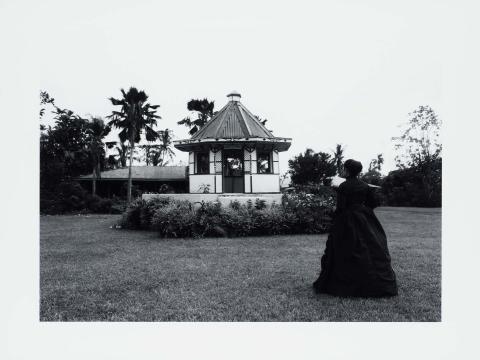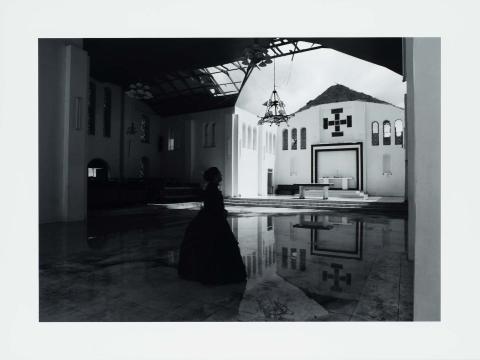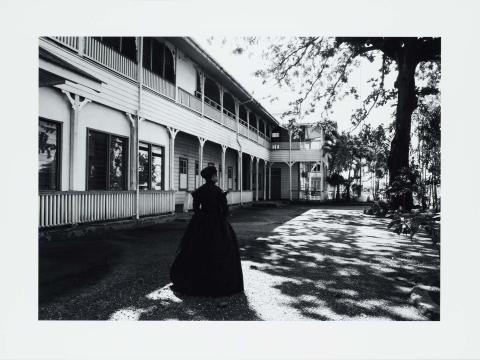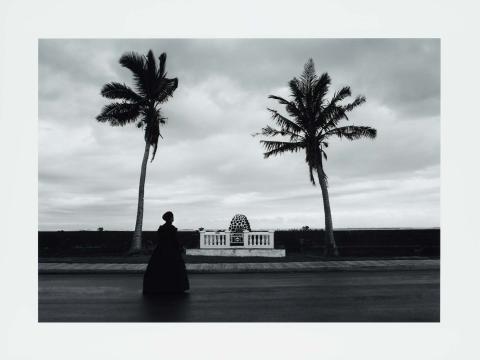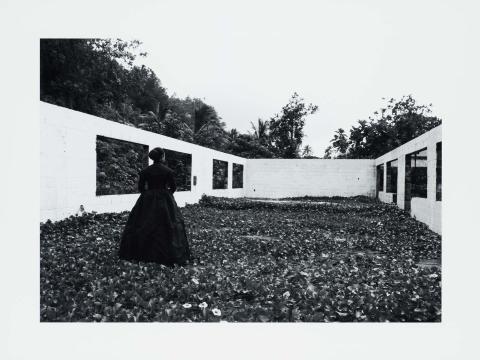Yuki Kihara
By Ruth McDougall
‘sis’ February 2024
Yuki Kihara is internationally recognised for an art practice that examines gender, history and representation in contemporary Pacific societies.
Following the tragic events of the tsunami Galu Afi (2009) and Cyclone Evan (2012), Kihara devised a series of works in 2013, in which she poses as a fictional nineteenth-century Samoan woman, called Salome, at historic Samoan sites. The series’ title — ‘Where do we come from? What are we? Where are we going?’ — is borrowed from a late nineteenth-century painting depicting an idyllic Tahitian landscape by French artist Paul Gauguin (1848–1903). Over a century later, Kihara revisited the Pacific landscapes that so fascinated Gauguin. The resulting black-and-white images highlight histories of occupation and dispossession, as well as the challenges faced by isolated island nations as they continue to struggle to assert their independence.
Kihara’s use of the photographic medium to create complex narratives continues the artist’s interest in redressing colonial stereotypes of Pacific people perpetuated through the camera lens. Accordingly, the series responds to images of Samoa taken by New Zealand photographer Alfred Burton, who travelled on the Union Steamship Company’s inaugural cruise of the Pacific in the 1880s. The full-length mourning gown worn by Salome is inspired by the restrictive dress introduced to Samoa by early Christian missionaries and worn by the female sitter in Thomas Andrew’s historic photograph from 1886 titled Samoan Half Caste.
Kihara’s Siva in Motion 2012 involves the artist re-enacting the devastation wrought by the Galu Afi tsunami through the Samoan art of taualuga — carefully choreographed and eloquent hand movements that narrate a story or event. The artist’s long-held interest in the role that fa‘afafine (Samoan non-binary individuals) play as cultural ambassadors is on display in this mesmerising video work.
Connected objects
Related artists
KIHARA, Yuki
1975
- present
Full profile
for KIHARA, Yuki


